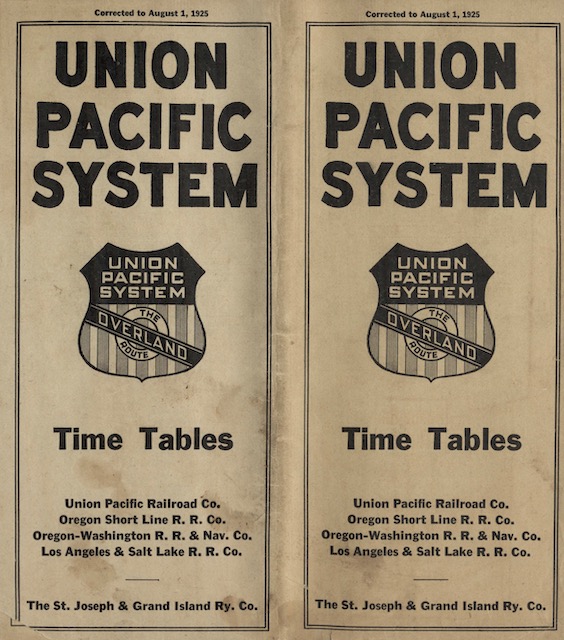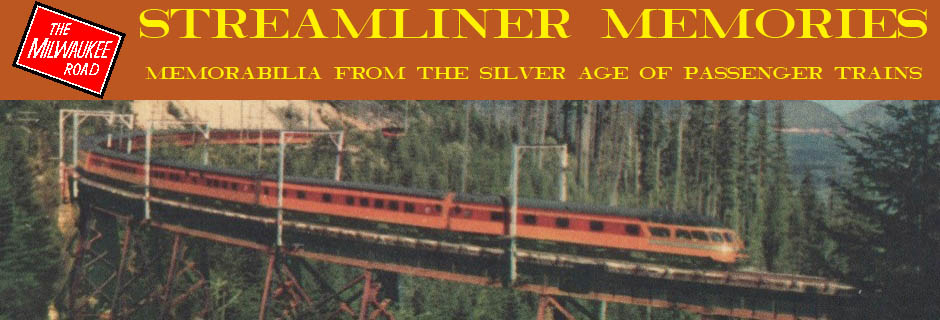The front cover of this timetable, which was contributed by Streamliner Memories reader Tim Zukas, advertises “low vacation fares to the Union Pacific West.” A table indicates that the round-trip fare from Chicago to Yellowstone was $56.50, which sounds low but is close to $1,000 in today’s money. Cedar City (Zion) was $2.10 more. Chicago round trip to Seattle, Portland, San Francisco, Los Angeles, or San Diego was $104.05, or about $1,800 today. Add about $50 round trip for journeys beginning in New York City.
 Click image to download a 46.5-MB PDF of this timetable.
Click image to download a 46.5-MB PDF of this timetable.
There were a few inconsistencies in the prices, which no doubt annoyed many passengers. The round-trip fare from Chicago to Yellowstone was the same as Chicago to Ogden even though Yellowstone was at least 10-1/2 hours away from Ogden. Trips to San Diego and Seattle were the same price as to Los Angeles and Portland even though the former required an extra train ride over a competitor’s railroad. The latter is understandable because UP probably had to match GN/NP prices to Seattle and Santa Fe prices to San Diego, but there is no reason to think that other railroads with trains going near Yellowstone would base their fares on the Chicago-Ogden fare.
New in this timetable that wasn’t in the 1920 or 1921 timetables presented here yesterday and the day before are 21 black-and-white photos showing various scenic destinations reached by UP trains. Unfortunately, the photos are tiny — most are about 1-3/4″ by 1-3/4″ — and, being black-and-white, don’t really show the scenic beauty of the West. The photo of Bryce Canyon, for example, wouldn’t inspire me to visit there, but I have been there and consider it one of the most beautiful spots in the world.
This timetable includes 3-1/4 pages of ads from steamship companies that sailed out of Vancouver, Seattle, Portland, San Francisco, or Los Angeles. The 1921 timetable, which was eight pages shorter, included only one page of steamship ads. Steamships must have been booming in the 1920s, and while UP, unlike Canadian Pacific, didn’t operate its own ships, it wanted potential passengers to know they could take a UP train to meet a ship that could take them to Alaska, Hawaii, Australia, New Zealand, Japan, Hong Kong, or other Asian ports.
